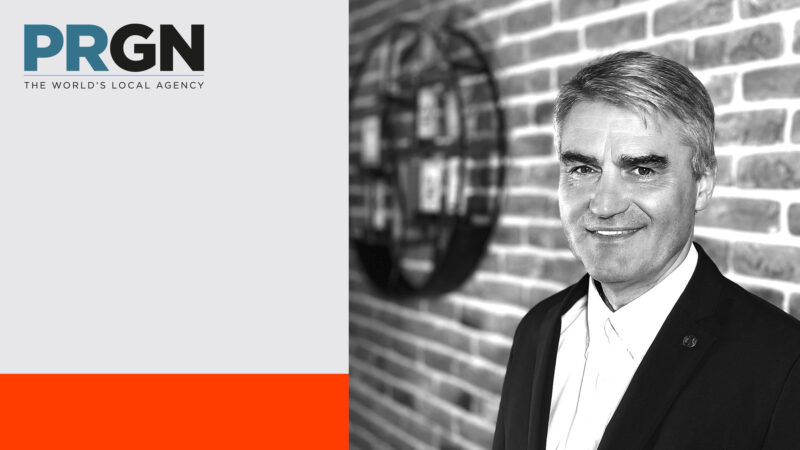“What’s in it for me” or the global role of a brand

Branding is often a battle of two perspectives: are you creating value for the individual or solving global problems? Few brands excel at both, and the brand’s more prominent role in the world is often overshadowed, even if it would benefit the business. There are ways to do both, although it is not always easy.
The situation may be familiar: when managers, marketers and consultants start designing brands and communication strategies, the discussion often turns to whether to serve the customer or the world. It doesn’t take long to find a designer who sums up that, in the end, it’s all about the value perceived by the individual target audience member – “What’s in it for me?”
At least at Ellun Kanat, you don’t have to wait long for another designer to throw up a convincing amount of research data on how brands are expected to solve global problems, or at least problems bigger than the company itself.
So are we delivering value to the customer, the individual or solving global problems? Brands are made for customers, so the answer is probably yes to both; we are doing both. If customers perceive making the world a better place as an important selection criterion, then clearly, there is value for the customer.
The aim should be to find a way to better the world that most naturally fits into a profitable business for the company and convinces its target audience.
So our branding work, and that of other agencies, should be able to help clients find a way to better the world that most naturally fits into a profitable business for the company and convinces its target audience. So far, the overall picture still feels manageable and precisely what each of us portrays to the customer in our proposals. But I would argue that it may not be so simple after all. Unfortunately, many real-world examples also show that not many brands ultimately excel at both.
It’s not easy to give a specific answer to a customer’s what’s in it for me question in a way that paints a clear picture of how we are building a better world together. At the top level, it works, but when you refine the idea to make it stand out and thrive in a multichannel information overload, it’s easy to lose sight of one side or the other. Sadly, the brand’s more significant role in the world is often overshadowed.
A social understanding becomes easily obscured
At Ellun Kanat, we are particularly good at understanding the forces of social change and analytically applying them to all aspects of design. Virtually all of our commissions go through a social analysis at some point in the process. We believe this is a great strength and the key to success in many branding projects.
Last winter, our Design Director Sasu Haanpää realised that the social understanding had somehow been hidden in the final products of our brand portfolio. We conducted analyses and justified our narratives and choices with social movements. Still, the brand book was filtered through texts and images with a rather traditional feel, in which the social aspect was left out of the story. In practice, however, branding only kicks in when it moves into implementation. Hence, it makes no sense to leave the understanding of the context and social movements only in workshops and background materials. This observation was the starting point for our latest branding product development project.
The brand needs to be relevant to multiple stakeholders. Customers, staff and shareholders are already something, but today’s brand needs to look at the world more holistically.
To address the need for brands from a societal perspective and to enable brand activism with a bolder sense of action and leadership, we developed a couple of additional tools for brands.
At the heart of socially relevant branding is the understanding that a brand needs to be relevant to multiple stakeholders. Customers, staff and owners are already something, but today’s brand needs to look at the world more holistically. To map these stakeholders and create real and relevant brands for them, we developed the CSRE analysis. With this tool, we identify the key stakeholders as challengers, supporters, business framework-setters and enablers. In the planning phase, the tool brings a more holistic perspective, and in the crystallisation phase, it helps to prioritise and focus messages. In contrast, the implementation phase provides better guidance for targeted communication and action. In this way, the brand can be brought to life in a way that is naturally present in the social debate.
The importance of recognising the forces of change
Another new tool helps to monitor and identify the various drivers of change in society. The tool helps define navigating the turbulent seas of social movements and phenomena. The tool will be calibrated as part of our branding work, i.e. we will identify the phenomena we take for granted, identify the phenomena and debates we monitor as potential threats and those we see as opportunities.
We live in exceptionally uncertain times, where geopolitics, empowered minorities and crumbling structural injustice are putting brands and organisations at the mercy of significant pressures for change and risk-filled circumstances. Old tactics are no longer enough, so it is time to adopt new tools. For brands facing a more complex operating environment, we now not only have good analysis to offer as before but also tools to make brands more resilient in times of uncertainty.



